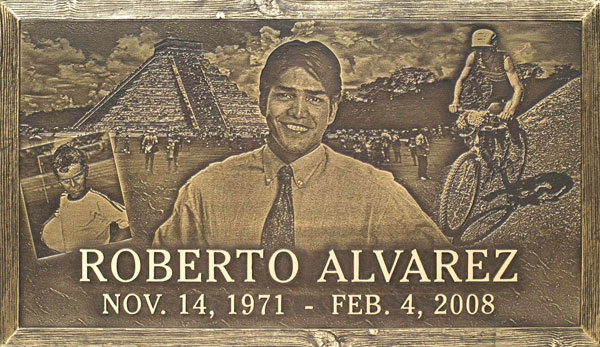Ground burial provides loved ones a place to remember those they have loved and lost. This is the most common form of final disposition and is usually performed in a cemetery or a memorial park. There are several products and choices available when choosing this option and a basic understanding of the terms and products can be very helpful in making proper choices.
GRAVE SPACE OR “PLOT”: This is the land space for burial. Typically it is about three-and-half feet wide by eight feet in length. This can vary greatly by rules and regulations of the cemetery. The depth of a grave also can vary for many reasons. It is not always true that a grave must be six feet deep. This was probably the desired depth when a simple burial was done in a field or prairie, simply to protect from animals or vandals. Today there are better ways to protect and bury, so the depth can vary. The grave space will be the site of a permanent grave memorial or monument.

DOUBLE DEPTH: A grave can be designed to accommodate double depth or more. This is very common and widely accepted. It allows for more burials while using less land space and can be a good option when space is limited. It may also be a less expensive option because of the space savings and the additional ease of care.
BURIAL VAULT: The vault or liner is what surrounds the casket to add protection. In most cemeteries and memorial parks there is a requirement for this protection. The earth which is placed on the burial is extremely heavy. The vault can be made of several time defying elements which provide necessary strength to support the site. There are many choices available to provide additional protections and can easily be explained by a funeral director or cemetery representative.
GRAVE MEMORIALS AND MONUMENTS: Memorials and monuments serve a much greater purpose than to simply “mark” the site. Memorials can be as unique and varied as the number of individuals they represent. Memorials are usually made of time defying elements such as bronze, granite or marble. They can be as simple as consisting of names and dates or as complete as representations of lives that have been lived. A memorial serves one of the most basic needs of mankind. The desire to be remembered lives deep within all of us and is truly what separates the human spirit from all other life. Many families find great comfort in creating a personal memorial that reflects the individual being remembered.

Click Here For examples of how families have created personal remembrances.
MAUSOLEUM: A mausoleum is any building which is designed to place human remains. Mausoleums can be constructed for a single individual or can hold many thousands. A mausoleum which has been designed for a single person or family is called a private mausoleum and represents one of the most grand and elaborate means of entombment. A mausoleum that has been designed for many entombments is referred to as a community mausoleum, and while it provides tremendous protection and stature, it can be quite economical due to space savings and many other factors.
LAWN CRYPT: This is where the vaults or crypts have been preinstalled underground. At the time of burial they simply dig down to the top of the crypt and remove the lid and place the casket. When it is built this way, it often allows for the installation of drainage and an added level of protection and uniformity.
CRYPT OR TOMB: A crypt or tomb is nothing more than the space in a mausoleum where a casket is placed.
ENTOMBMENT: Is the act of placing the casket in the crypt for final rest.

MAUSOLEUM MEMORIAL: The mausoleum space or “crypt” is usually memorialized in the same manner as a grave. The selections can be quite uniform to create a very beautiful and unique appearance or can be very individualized to reflect the lives of loved ones place there.
ENDOWMENT OR PERPETUAL CARE: These are the funds which have been set aside to care for the space or crypt into the future and even after the building or cemetery is completely full. These funds are invested according to strict guidelines and laws. It is the interest derived from these funds which is there to pay for upkeep and care for perpetuity.
CEMETERY REGULATIONS: Many families aren’t aware that most cemeteries have regulations about the type of grave memorial or monument you can place, and also about where you can place them. For example, some cemeteries only allow flat grave memorials, other allow a mix of flat and stand-up monuments, and still others allow a mix, but have specific sections for different kind of monuments. It is important to clarify any rules before purchasing a monument, and your local cemetery will be happy to help you with on these, and help you understand all your choices.
Click here to view a video on the meaning of permanent remembrance.